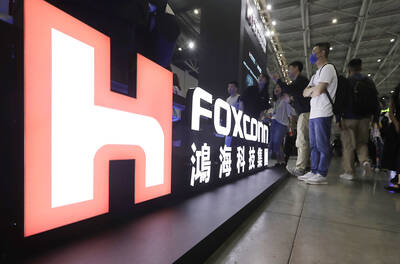The total revenues of companies at the three main science parks fell by more than 38 percent in the first half of this year as a result of the global recession, the National Science Council (NSC) said.
Turnover at the Hsinchu Science Park (新竹科學園區) in northern Taiwan, the Central Taiwan Science Park (中部科學園區) and the Southern Taiwan Science Park (南部科學園區) amounted to NT$631.4 billion (US$19.13 billion), representing a year-on-year decline of 38.2 percent, NSC Vice Chairman Chen Li-chun (陳力俊) said at a news conference on Wednesday.
A chart of the three science parks’ revenues between January last year and June showed that revenues bottomed out last January, then began a gradual rise, Chen said.
Revenues totaled NT$377.2 billion in the second quarter of this year, representing an increase of 48.3 percent from the first quarter.
“Judging from that trend, the revenues of the three science parks will continue to rise in July and August,” Chen said.
Integrated-circuit makers were the mainstay of the three parks, contributing NT$316.3 billion, or 50.1 percent, to revenues in the first half of the year. This was a decline of 34.9 percent from the same period last year, NSC figures showed.
Optoelectronics firms were the second-largest contributor, generating NT$254.7 billion, or 40.3 percent of the three parks’ revenues.
The figure was a year-on-year drop of 43.7 percent.
The third-largest group, computer and peripheral companies, contributed NT$27.7 billion in revenues, a drop of 34.3 percent, the tallies showed.
As of the end of June, 689 companies had been approved to operate in the three parks, with 446 to be located in the Hsinchu Science Park, 151 in the Southern Taiwan Science Park and 92 in the Central Taiwan Science Park, NSC tallies showed.
Meanwhile, the production value of the semiconductor sector was expected to amount to NT$1.14 trillion (US$34.55 billion) this year, down 13 percent from last year, the Institute for Information Industry said yesterday.
Supply and demand in the sector returned to normal in the second quarter of the year following rapid inventory adjustments in the first quarter, when the sector bottomed out, the Market Intelligence and Consulting Institute said.
The output of the contract chipmaking industry, which was estimated at NT$52.5 billion in the first quarter, is projected to reach NT$100 billion in the second quarter and increase further to NT$115.2 billion in the third quarter, the MIC said.
It said the industry’s total production value was likely to reach NT$375.5 billion for the whole year.

A proposed 100 percent tariff on chip imports announced by US President Donald Trump could shift more of Taiwan’s semiconductor production overseas, a Taiwan Institute of Economic Research (TIER) researcher said yesterday. Trump’s tariff policy will accelerate the global semiconductor industry’s pace to establish roots in the US, leading to higher supply chain costs and ultimately raising prices of consumer electronics and creating uncertainty for future market demand, Arisa Liu (劉佩真) at the institute’s Taiwan Industry Economics Database said in a telephone interview. Trump’s move signals his intention to "restore the glory of the US semiconductor industry," Liu noted, saying that

On Ireland’s blustery western seaboard, researchers are gleefully flying giant kites — not for fun, but in the hope of generating renewable electricity and sparking a “revolution” in wind energy. “We use a kite to capture the wind and a generator at the bottom of it that captures the power,” said Padraic Doherty of Kitepower, the Dutch firm behind the venture. At its test site in operation since September 2023 near the small town of Bangor Erris, the team transports the vast 60-square-meter kite from a hangar across the lunar-like bogland to a generator. The kite is then attached by a

Foxconn Technology Co (鴻準精密), a metal casing supplier owned by Hon Hai Precision Industry Co (鴻海精密), yesterday announced plans to invest US$1 billion in the US over the next decade as part of its business transformation strategy. The Apple Inc supplier said in a statement that its board approved the investment on Thursday, as part of a transformation strategy focused on precision mold development, smart manufacturing, robotics and advanced automation. The strategy would have a strong emphasis on artificial intelligence (AI), the company added. The company said it aims to build a flexible, intelligent production ecosystem to boost competitiveness and sustainability. Foxconn

STILL UNCLEAR: Several aspects of the policy still need to be clarified, such as whether the exemptions would expand to related products, PwC Taiwan warned The TAIEX surged yesterday, led by gains in Taiwan Semiconductor Manufacturing Co (TSMC, 台積電), after US President Donald Trump announced a sweeping 100 percent tariff on imported semiconductors — while exempting companies operating or building plants in the US, which includes TSMC. The benchmark index jumped 556.41 points, or 2.37 percent, to close at 24,003.77, breaching the 24,000-point level and hitting its highest close this year, Taiwan Stock Exchange (TWSE) data showed. TSMC rose NT$55, or 4.89 percent, to close at a record NT$1,180, as the company is already investing heavily in a multibillion-dollar plant in Arizona that led investors to assume